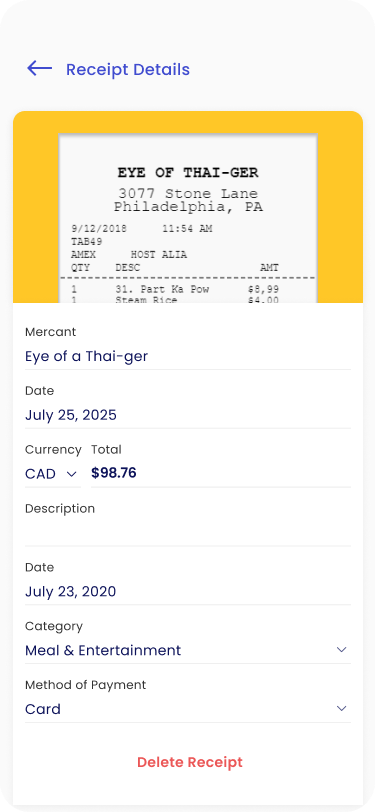Track your expenses effortless with Scanner
Track your expenses effortlessly with

This is a space to welcome visitors to the site. As the first text readers encounter, this copy should clearly convey what the site is about. Grab their attention with captivating and inviting text, and add an image or video for extra engagement.
Overview
Freelancers and small business owners often lose valuable time and money managing receipts. Paper slips get misplaced, digital receipts pile up in inboxes, and tax season becomes stressful and error-prone.
To address this, I designed an AI mobile-first receipt scanner app that uses OCR technology to capture, categorize, and organize receipts in real time. The goal was to reduce the time users spend managing expenses while improving accuracy and peace of mind during tax filing.
This case study walks through my process — from identifying the problem through user research, to iterating on wireframes, testing, and delivering a solution that streamlines expense management.
The Problem
Freelancers and small business owners often struggle to keep track of receipts for tax season.
-
Current methods, such as folders, email searches, and spreadsheets, can be time-consuming.
-
Missing receipts means lost tax deductions.
-
Manual tracking creates stress and is prone to errors.
-
Existing tools often feel bloated, overwhelming users with features they don’t need.
Problem Statement: "How might we help freelancers quickly capture, organize, and retrieve receipts so they can reduce tax-time stress and save money?"
Research
I conducted 5 user interviews with freelancers and independent contractors to understand their workflow. Key insights from this interview showed that users spend an average of 5+ hours/month organizing receipts.

Overview
Freelancers and small business owners often lose valuable time and money managing receipts. Paper slips get misplaced, digital receipts pile up in inboxes, and tax season becomes stressful and error-prone.
To address this, I designed an AI mobile-first receipt scanner app that uses OCR technology to capture, categorize, and organize receipts in real time. The goal was to reduce the time users spend managing expenses while improving accuracy and peace of mind during tax filing.
This case study walks through my process — from identifying the problem through user research, to iterating on wireframes, testing, and delivering a solution that streamlines expense management.

SSO Account Management Tool
Reducing support strain by simplifying access — a tool designed to help scale user management at Let’s Talk Science.
✔ Role: UX + Product Design
✔ Team: Insights, Development, Customer Support
✔ Tools: Figma, Miro
✔ Timeline: 4 weeks
Context: Let’s Talk Science (LTS) is a national non-profit that serves thousands of educators and volunteers across Canada. As usage scaled, the customer service team was overwhelmed by repetitive support requests related to login issues and account management — particularly SSO-related problems.

The Problem
Freelancers and small business owners often struggle to keep track of receipts for tax season.
-
Current methods, such as folders, email searches, and spreadsheets, can be time-consuming.
-
Missing receipts means lost tax deductions.
-
Manual tracking creates stress and is prone to errors.
-
Existing tools often feel bloated, overwhelming users with features they don’t need.
Small businesses and freelancers need a faster and more approachable way to track their everyday expenses.

Problem Statement
How might we help freelancers quickly capture, organize, and retrieve receipts so they can reduce tax-time stress and save money?
Organization & End-user Impact
This created several pain points for both users and the organization:
-
Repetitive workload led to delayed educator support
-
High error rate from manual processing
-
Poor educator experience and increased frustration
-
No integration with existing CRM (Zoho), leading to duplicate entry
-
Lack of visibility into account history and project involvement
Goals
🎯 User Goal:
Faster, smoother support experience
📊 Business Goal:
Reducing service load while scaling
⚙️ Internal Goal:
Build for Integration and Long term Support
Research
I conducted 5 user interviews with freelancers and independent contractors to understand their workflow. Key insights from this interview showed that users spend an average of 5+ hours/month organizing receipts.
Top Pain Points
-
Receipts are scattered across email, paper, and apps.
-
Forgetting to track small purchases.
-
Anxiety during tax season due to missing info.
Desired Outcome
-
Quickly capture receipts in the moment.
-
Automatic organization.
-
Easy export to accountants or tax software.
User Persona
User Persona

Maria, 28 - Marketing Consultant
A consultant managing multiple client projects who struggles with digital receipt overload during tax season.
Core Needs:
-
Easily capture and consolidate emailed receipts.
-
Track expenses across multiple clients and projects.
-
Reduce time spent manually organizing receipts.
-
Generate reports for tax filing.

Jamie, 34 - Wedding Photographer
Freelance photographer who struggles to keep receipts organized while traveling for client work.
Core Needs:
-
Capture receipts quickly on the go.
-
Automatically categorize and organize expenses.
-
Reduce stress and errors during tax season.
-
Get a clear monthly overview of spending.
Process & Iteration
The initial prototype version below was designed with regular users in mind; people who want to track their own everyday expenses, not businesses or freelancers.
-
Manual receipt capture and simple categorization.
-
Focused on mobile-first UX with a central “Upload receipt” button.
-
Users could review and edit categories manually
Goal: explore usability for day-to-day receipt management.
Process & Iteration
The initial prototype version below was designed with regular users in mind; people who want to track their own everyday expenses, not businesses or freelancers.
-
Manual receipt capture and simple categorization.
-
Focused on mobile-first UX with a central “Upload receipt” button.
-
Users could review and edit categories manually
Goal: explore usability for day-to-day receipt management.
After Testing
During User Acceptance Testing (UAT) and QA testing, we identified an issue with pagination where page numbers for results were incorrectly displaying as 1-444. This error has since been resolved. Sarah is pleased with the functionality so far, and we hope that more staff will adopt this tool to streamline their daily tasks. We received great feedback from the testing sessions and look forward to adding more features in future iterations

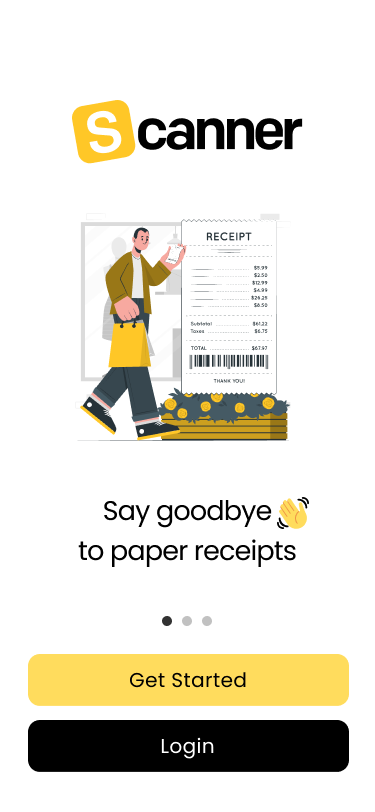
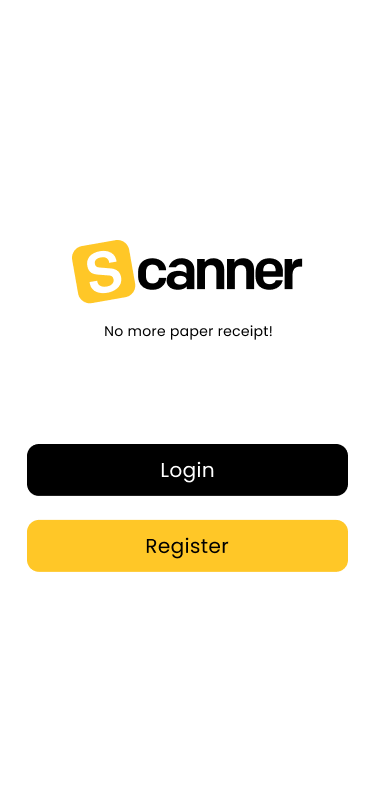
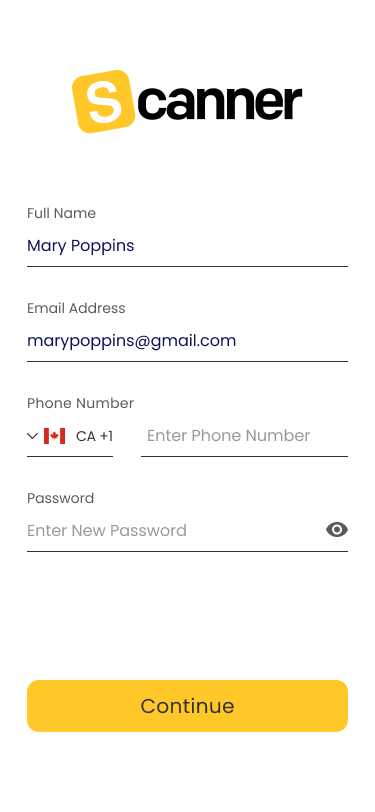
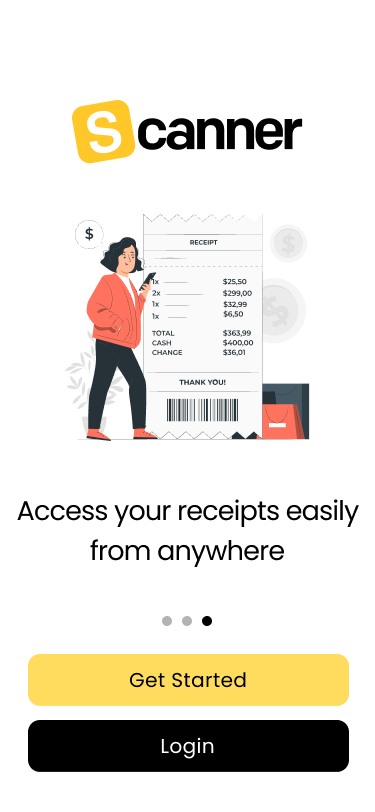



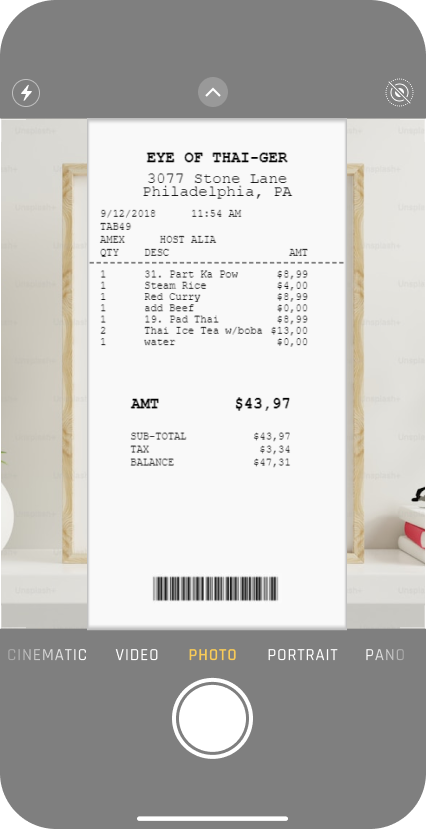
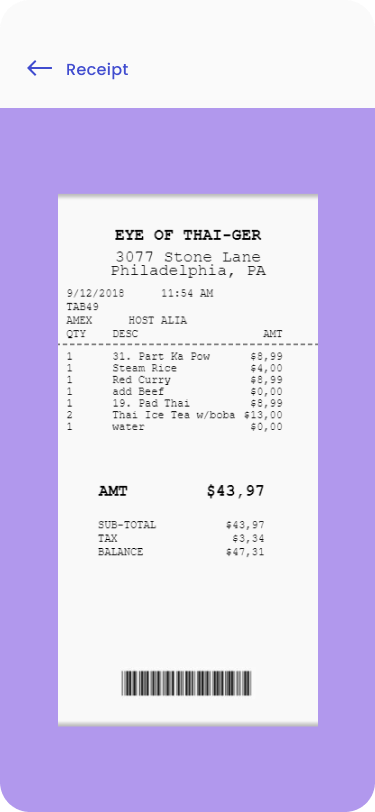

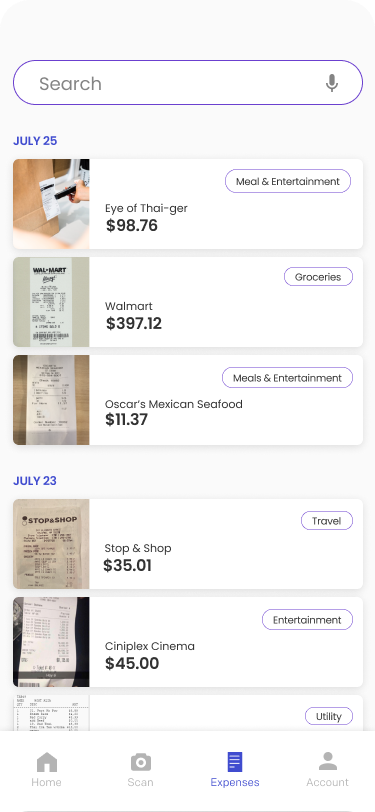
User Testing & Insight
Testing with freelancers and consultants revealed that:
-
Manual entry and categorization were time-consuming and error-prone.
-
Users wanted automatic extraction of receipt details.
-
Email receipts require consolidation.
-
Additional needs included monthly summaries and alerts for missing receipts.
These insights showed the personal-use prototype didn’t scale to high-volume users.
Iteration and AI Integration
Based on feedback, I introduced AI-powered features. This iteration directly addressed pain points, scaling the app from a simple personal tool to a solution for freelancers and small businesses.
User Testing & Insight
Testing with freelancers and consultants revealed that:
-
Manual entry and categorization were time-consuming and error-prone.
-
Users wanted automatic extraction of receipt details.
-
Email receipts require consolidation.
-
Additional needs included monthly summaries and alerts for missing receipts.
These insights showed the personal-use prototype didn’t scale to high-volume users.
Iteration & AI Integration
Based on feedback, I introduced AI-powered features. This iteration directly addressed pain points, scaling the app from a simple personal tool to a solution for freelancers and small businesses.
01
OCR Receipt Capture: Automatically extracts vendor, date, and amount.
02
Smart Categorization: Predicts expense type; users can confirm or adjust.
03
Automated Insights & Summaries: Generates monthly reports, highlights missing receipts.
04
Predictive Reminders: Alerts users to capture receipts based on patterns.
Proposed Solution
My solution explored a simple but core flow: onboarding → scan → confirm details → AI recommendations → expense summary
Instant photo capture
Let's users take an instant photo of reciept to extract expense details
Auto-extraction of store, date, & total
Allows for mobile budgeting and expense tracking.
Categorized expense tracking and monthly insights.
A one-stop shop that allows users to see their spending history and receipts from anywhere

Proposed Solution
My solution explored a simple but core flow: onboarding → scan → confirm details → AI recommendations → expense summary
Snap photos or forward email receipts; AI extracts key details.
Feature 01
Quick Capture
Consolidates and organizes digital receipts automatically.
Feature 02
Smart Inbox
Feature 03
Monthly Dashboard
Visual overview of expenses, flagged anomalies, and proactive insights.
Easily send receipts or reports to accounting software.
Feature 04
Export & Share
User Impact
A reduced average time managing receipts from 5 hours → 30 minutes per month. Jamie and Maria are satisfied
-
Jamie: Captures receipts on the go without losing data.
-
Maria: Manages multi-client expenses digitally with minimal effort.
After Testing
During User Acceptance Testing (UAT) and QA testing, we identified an issue with pagination where page numbers for results were incorrectly displaying as 1-444. This error has since been resolved. Sarah is pleased with the functionality so far, and we hope that more staff will adopt this tool to streamline their daily tasks. We received great feedback from the testing sessions and look forward to adding more features in future iterations
Onboarding Flow & Dashboard










Use this space to write a brief overview of a product or service, focusing on how users can benefit from it.
Reach New Heights
This is your description paragraph
Feature 01
This is your description paragraph
Feature 01
This is your description paragraph
Feature 01
This is your description paragraph
Feature 01
Design Process
Research
To deeply understand the daily challenges faced by the customer service team, I conducted workflow shadowing sessions with Sarah and her colleagues. Over several days, I observed how they handled SSO-related support requests in real time
1
Design
After mapping out the educator journey and customer service workflows, I moved into the design exploration phase, starting with low-fidelity wireframes to validate layout, logic, and user flows with stakeholders.
3
Ideation
To ensure our internal tool aligned with the full service experience, I mapped the educator’s journey from sign-up to support request resolution. This allowed me to identify when and how SSO issues surfaced, and how they impacted the educator’s goals
2
Feedback
Collaboration was a critical part of the design process for the SSO management tool. From early sketches to mid-fidelity prototypes, I led multiple feedback loops with cross-functional teammates to ensure the solution aligned with both user needs and technical constraints.
4
Iteration Loop
To ensure the tool was solving the right problems in the right way, I built lightweight feedback loops into the design process. These iterative cycles helped de-risk assumptions, surface blind spots early, and ensure the product was tightly aligned with user needs
5
Impact

Estimated 40% faster ticket resolution
01
Fewer repeated requests from educators
02
Customer Support team reports higher confidence
03
Problem
Handling SSO-related requests posed several challenges for the customer service team. These included:
-
High volume of repetitive tasks leading to delays
-
Manual errors in resolving user credential issues
-
Limited visibility into educators’ specific SSO configurations, permissions, and request history
-
Duplicate data entry
-
Difficulty tracking and managing request progress
-
Frustration among educators due to delayed responses
-
Lack of integration with existing CRM systems (Zoho)
Tackling Sarah's Pain Point







